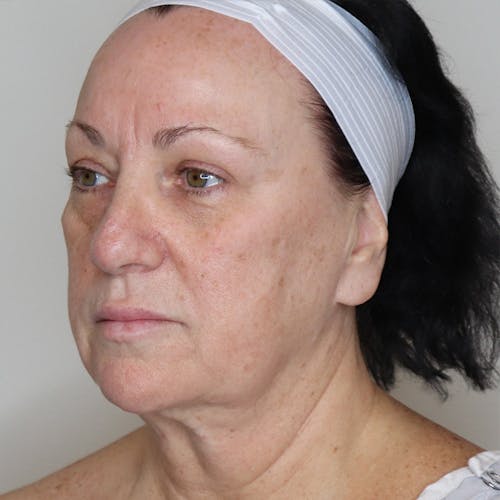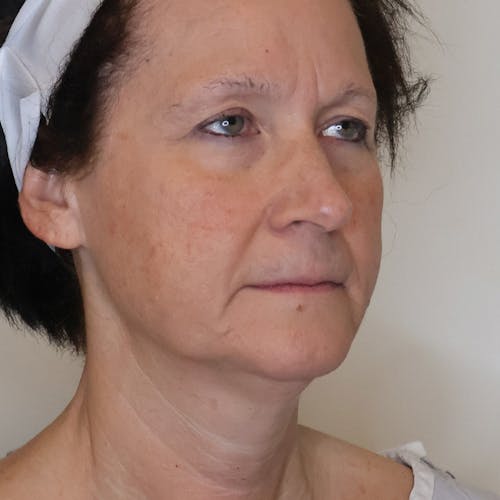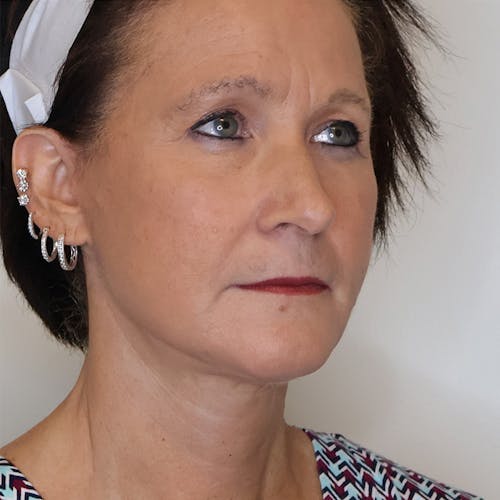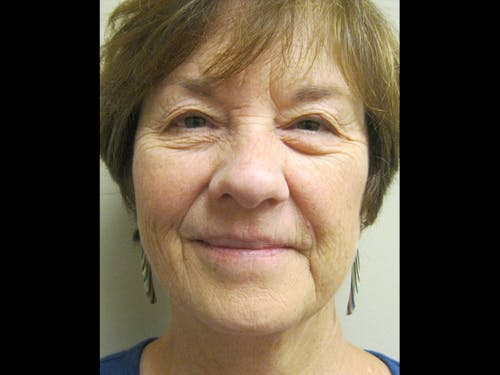The facelift removes coarse wrinkling and sagging skin. It cannot remove the fine wrinkling associated with sun exposure.
How Does the Face Age Over Time?
As the face ages, gravity’s effects become more obvious. The earliest apparent change is the loss of the cervical mental angle, the angle formed by the neck and lower jaw. As the neck skin becomes lax, it sags and gradually obliterates the youthful sharp angle. This condition generally has three components: a laxity of skin, a laxity of the underlying muscles (particularly the platysma muscles), and an accumulation of fat. Lax platysma muscles cause the bands in the front portion of the neck that often are seen in older persons. In the upper portion of the face along the jawline, excess skin creates jowls. These jowls may be characterized by fat deposits. The folds that run from the nose to the jaw (nasolabial folds) also become more accentuated with age, which is an issue our facelift in Portland addresses.














